The picture-perfect coastal city of Cape Town is not only the legislative capital of South Africa but also home to the national Parliament. Known for its stunning views, vibrant neighborhoods, and cultural depth, Cape Town continues to top bucket lists across the globe. It’s often considered the most beautiful city in Africa, and once you arrive, it’s easy to see why.
Arriving in Cape Town – A Quick Flight from Johannesburg
Our journey to Cape Town began in Johannesburg, flying with Mango Airlines during our South Africa Tour in August 2018. With just a couple of days to explore, we knew we had to make the most of our time in this spectacular destination.
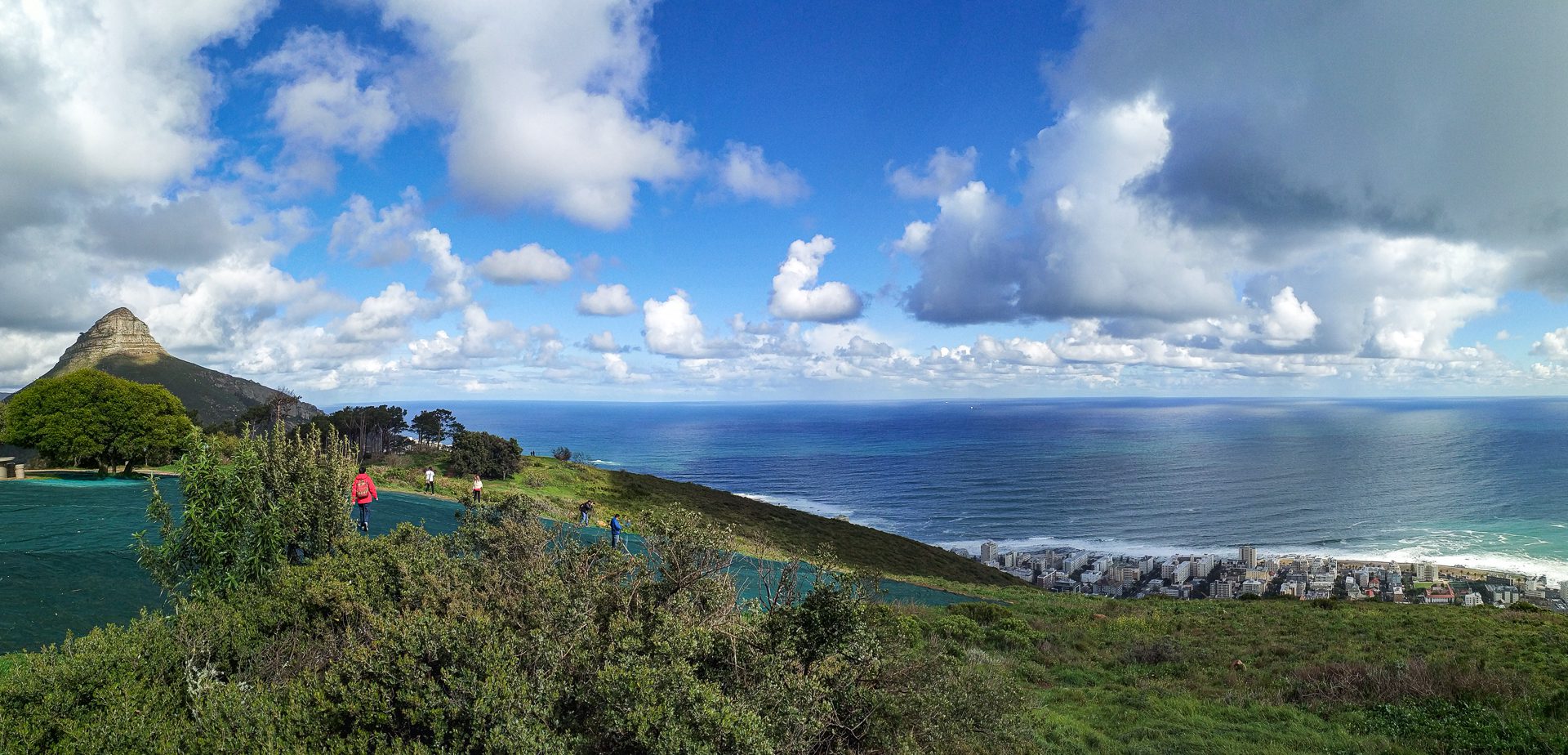
Geography and Natural Beauty – Where Mountains Meet the Sea
Cape Town is dramatically positioned at the end of the Cape Fold Mountain Range and along the spine of the Cape Peninsula. The iconic Table Mountain stands as its majestic centerpiece, flanked by rugged peaks and cliffs that plunge into the Atlantic Ocean. From above, the coastline forms a graceful arc that makes the city’s natural beauty even more striking.
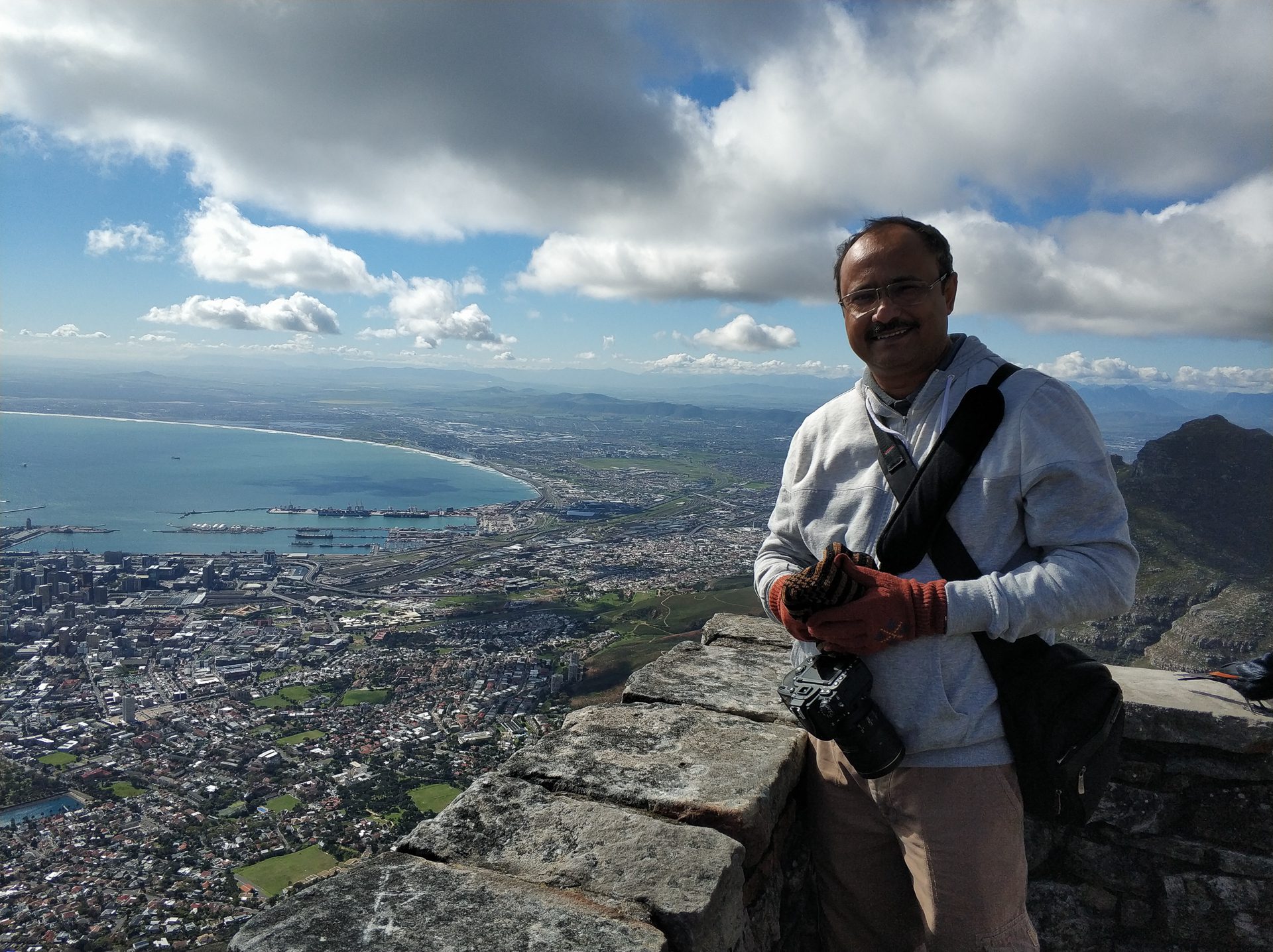
Why Cape Town Should Be on Your Bucket List
Whether you’re interested in hiking, wine tasting, historical tours, or just relaxing by the sea, Cape Town offers a perfect blend of experiences. From the Bo-Kaap to the V&A Waterfront, and from Boulders Beach to Cape Point, the city is packed with must-see sights and unforgettable adventures.
The picture perfect coastal city of Cape town is the seat of Parliament and the legislative capital of South Africa. Cape Town has a bit of everything for the avid traveler. It usually hangs high in the bucket list of travelers around the world and is probably the most beautiful city in Africa. We reached here from Johannesburg, during our South Africa Tour in August 2018, by Mango Airlines with only a couple of days to spare. Cape Town is built at the end of the Cape Fold mountain range and the mountainous spine of the Cape Peninsula, which includes the Table mountain. It is bordered by the Atlantic shoreline which caves into a delightful arc when viewed from above.
Again a quick Question : Which is the capital of South Africa ? The answer is at the end of this article.
Reaching Cape Town from Johannesburg
We had earlier completed the first leg of our South Africa tour. It included a night at the African Cultural Village, Aha Lesedi, (Read our African Cultural experience here) then two nights of game viewing inside Kruger National Park ( Read our Kruger Game viewing experience here) and lastly two more days in the lap of nature through the Panorama Tour ( Read our Panorama Route experience here).
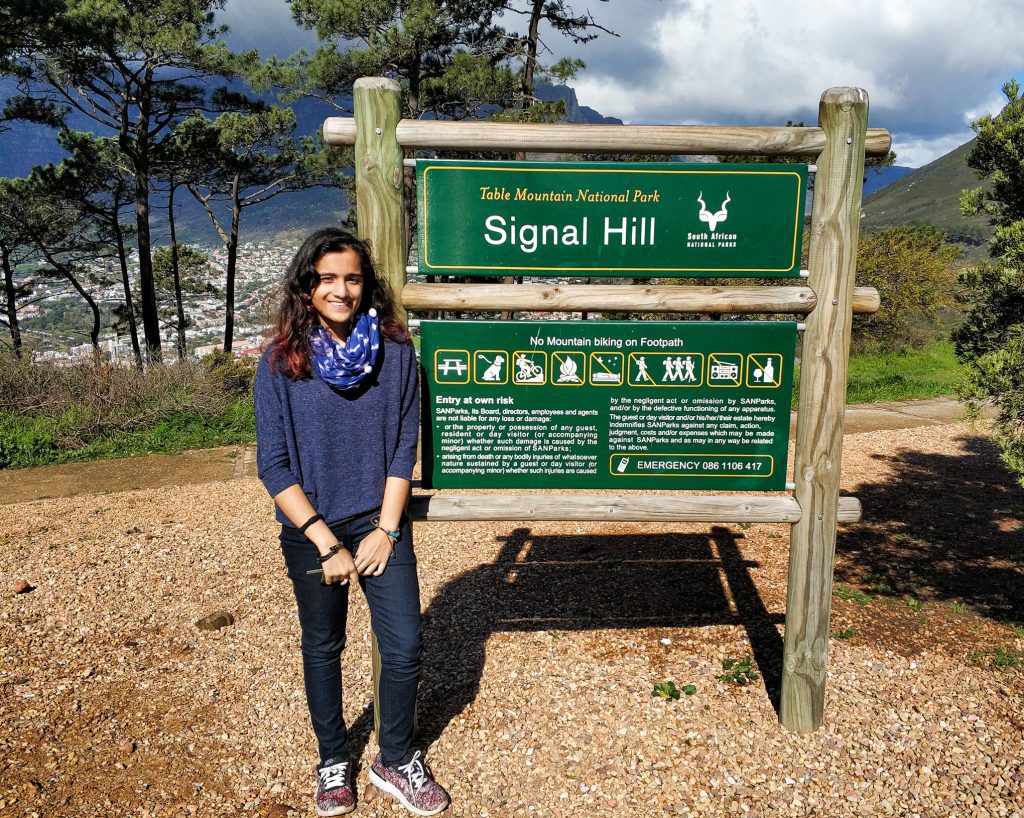
During our descent into Cape Town International airport the city was shrouded in a misty veil as we looked down from above, . A much smaller airport when compared to Johannesburg, it started to rain by the time we had picked up our car from the airport based car rental. We had booked ourselves an apartment at York Road, about a kilometer and a half from V&A waterfront, the center of tourist attraction here at Cape Town. We were booked for a trip to the Table mountain in the afternoon and then a trip to Robben Island the next day. But the weather played spoilsport for us on day one and we found that the Table mountain cable rides had been cancelled because of rain and windy skies and thus were left with a couple of hours to spare. We needed to juggle our plans since we had only planned for two nights and the major portion of the third day for our Cape Town tour.

Cape Town is the ideal destination for every kind of traveler. It offers great scenic beauty with nature walks, hikes and mountainous trails for the sporty, luxury cruises for the rich and affluent, idyllic beach holidays, wine valley tours for the connoisseur, buzzing nightlife for the night-owls, exotic retreats and adventure holidays as well as quieter family destinations too. A bit of history and culture, a peek into the days of the Apartheid, colourful streets and some interesting museums makes this part of a Bucket Travel List for many.
Table Mountain
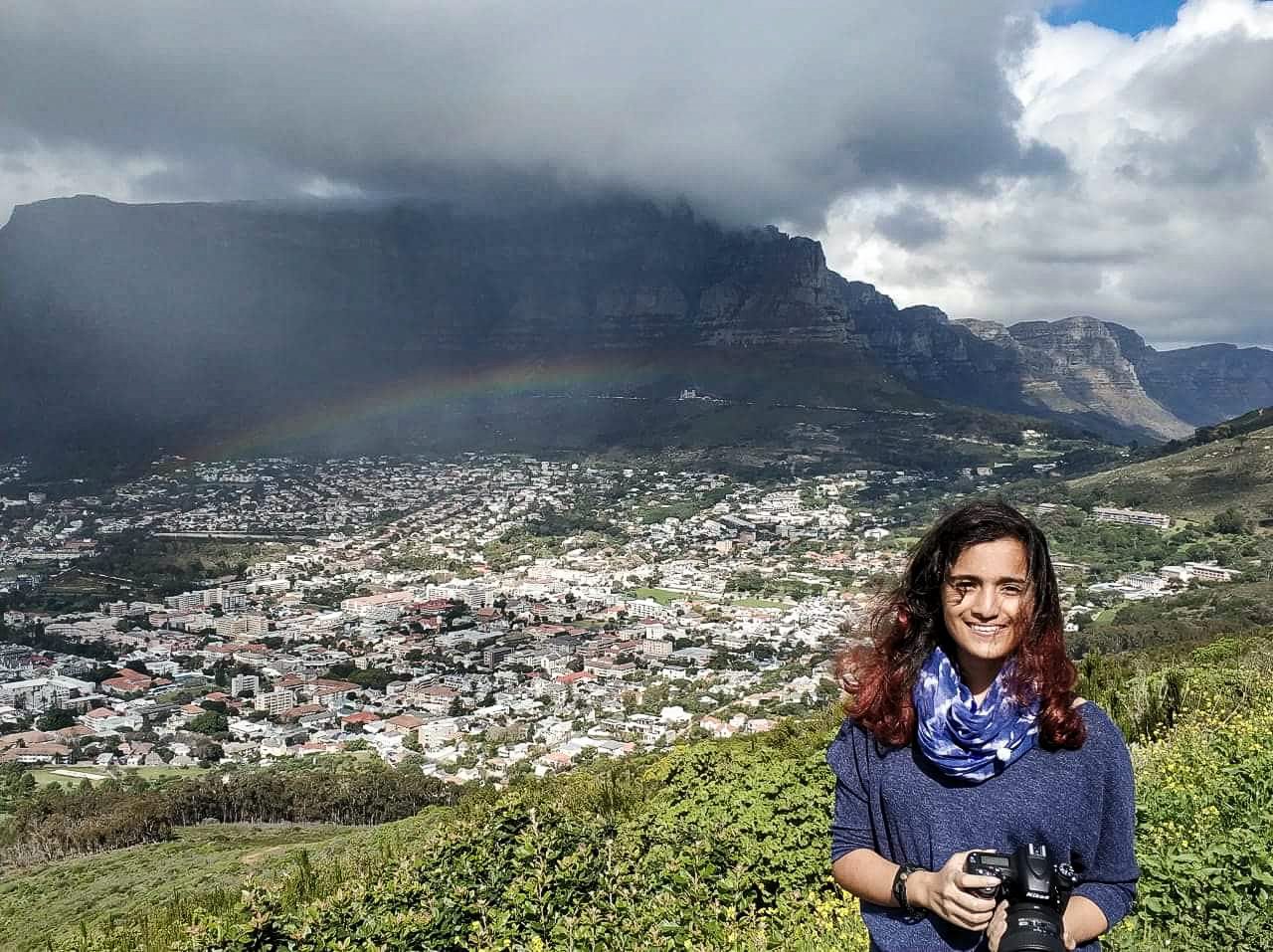
Table Mountain ,Clouds and Rainbow view from Signal Hill
The Table mountain forms the backdrop for most of the city of Cape Town and wherever you go, it looms large overhead. The mountain got its name for its flat top caused by erosion of layers of sandstone over millions of years. It can be accessed by a hike of about an hour or so or through a cable car ride which takes just around 5 minutes. The cable car operates between 8.30 am and 7 pm for most days and has two different shifts, morning and afternoon for which you can purchase tickets online before hand .The whole of Cape Town is visible from the top of Table Mountain, as well as Lion’s Head, the Twelve Apostles, Camps Bay and Robben Island at a distance. The official website is here at https://www.tablemountain.net/
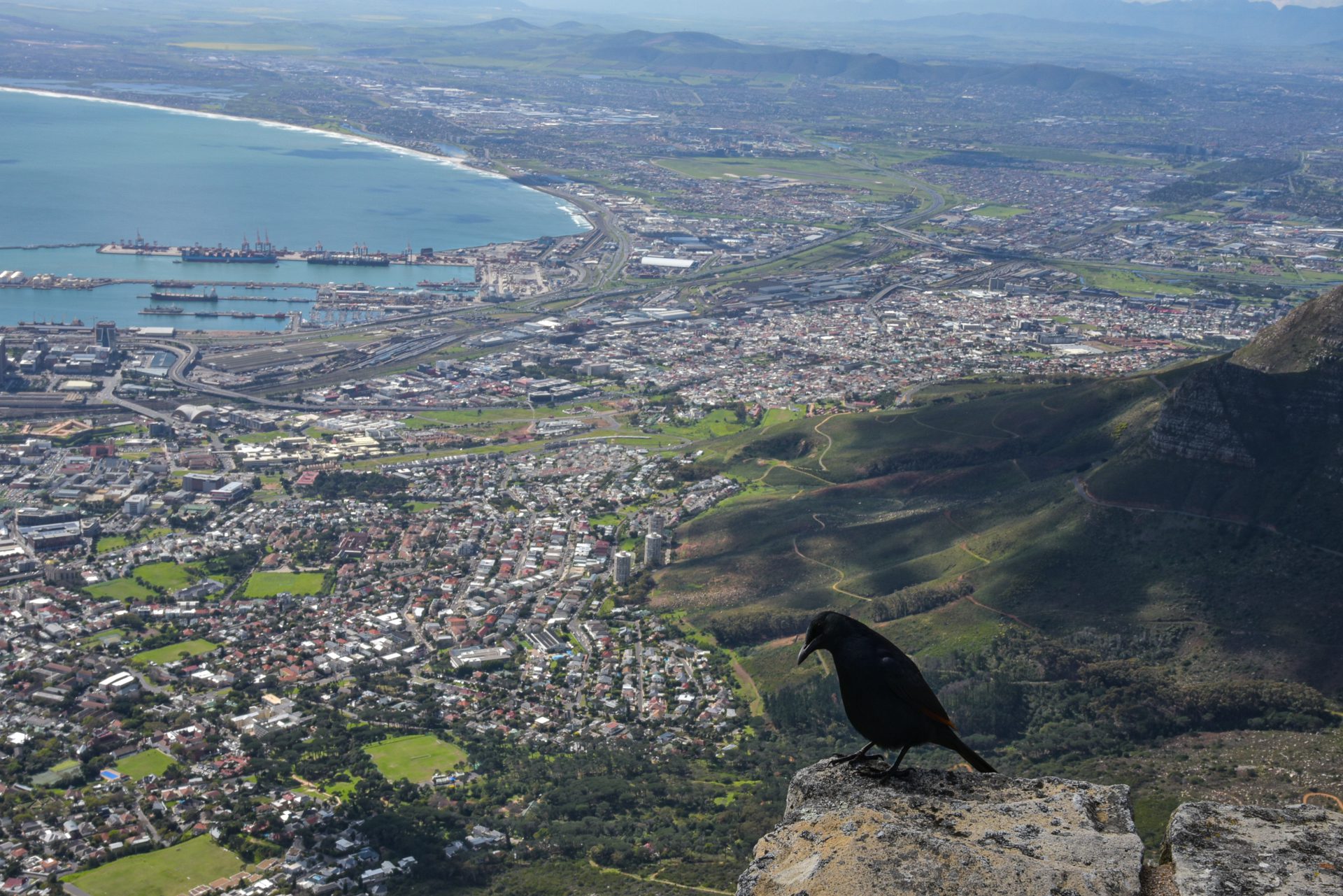
Soaring Above Cape Town: The Table Mountain Cableway Experience
No trip to Cape Town is complete without a visit to Table Mountain, one of the city’s most iconic natural landmarks and a proud member of the New7Wonders of Nature. We made our way to the base station, braving long queues for the Table Mountain Aerial Cableway, which had just reopened after its annual two-week maintenance closure.
We made our way to the base station, joining long queues for the Table Mountain Aerial Cableway, which had just resumed operations the day before after its annual two-week maintenance closure. The excitement built quickly as we boarded the rotating cable car — a brilliant design feature that allows everyone onboard to enjoy uninterrupted, panoramic views during the ascent. As the car glided smoothly upward, Cape Town’s cityscape, Signal Hill, the curving Atlantic shoreline, and even Robben Island slowly came into view, revealing the stunning topography of the Cape in all its glory.
from which it earns its name. As we stepped out of the cable car station at the summit of Table Mountain, we were greeted by a blast of icy wind — a stark contrast to the warmer city below.
The wait was worth every minute. The rotating cable car offers a 360-degree panoramic view as it ascends — an ingenious feature that ensures everyone gets a fair glimpse of the surrounding beauty, no matter where they stand. As the cable car glides upward, the view of Cape Town’s cityscape, the vast Cape Peninsula,, Signal Hill, the Atlantic coastline, the entire city below, and the rugged peaks of the Twelve Apostles stretching into the distanceand even Robben Island in the distance slowly unfolds below you. The sky and sea merged into an endless horizon of blues and aquas, while clouds drifted low and soft overhead, giving the entire scene a magical, almost otherworldly quality.
At the summit, we were greeted by chilly gusts of wind and a sudden drop in temperature — a reminder of the mountain’s elevation. The top of Table Mountain is unexpectedly vast, covering around 10,000 square meters of flat terrain, which gives the mountain its iconic “tabletop” appearance.
Well-marked trails and viewing platforms make it easy to explore the summit, and every turn reveals a new angle of the spectacular scenery below. It’s a truly unforgettable experience and a highlight of any trip to Cape Town. The vibrant blues and aquas of the Atlantic Ocean blend seamlessly with the sky at the horizon, while soft clouds hover just overhead, creating a surreal, almost dreamlike atmosphere.
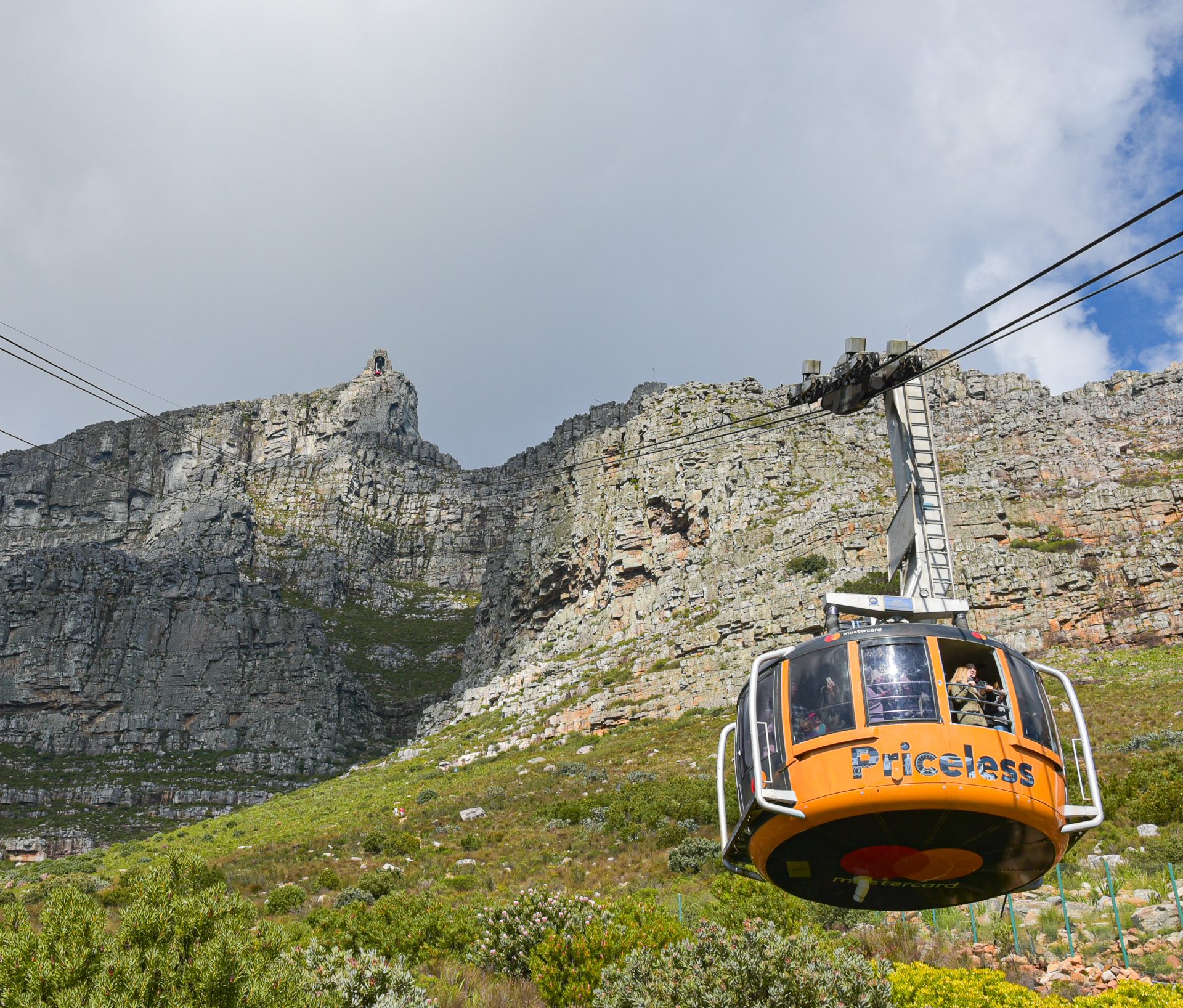
It’s a breathtaking experience — watching the world stretch out around you as you rise above it, wrapped in clouds and awe. A definite must-do when in Cape Town! From this lofty vantage point, you’re treated to sweeping 360-degree views of Cape Town, the Cape Peninsula, and the dramatic cliffs of the Twelve Apostles mountain range. The vistas are nothing short of breathtaking —
While exploring the summit of Table Mountain, we encountered a delightful little creature — the rock hyrax, affectionately known as the dassie by locals. At first glance, it looked like an odd mix between a badger, a giant guinea pig, and an earless rabbit. Surprisingly, though, its closest living relatives in the animal kingdom are elephants!
These small mammals are indigenous to South Africa and are often seen sunbathing or scampering across the rocky outcrops and crevices of Table Mountain. Completely unbothered by human presence, the dassies we saw moved about confidently, darting between rocks with surprising agility. Watching them in their natural habitat added a charming, unexpected twist to our mountaintop adventure.

Just a short walk from the Cableway station at the summit, we found a cozy resting area complete with a restaurant and café — the perfect spot to warm up and recharge. Whether you’re in the mood for a quick coffee, a refreshing local lager, a glass of South African wine, or a light meal, this welcoming space has you covered.
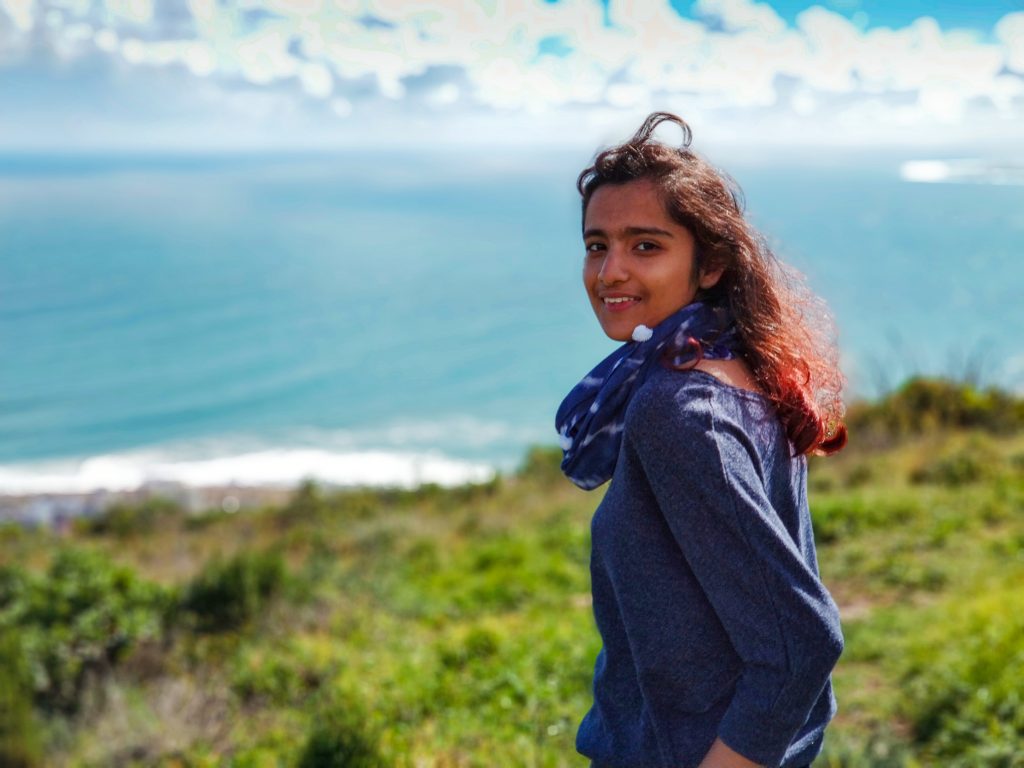
There’s also a charming souvenir shop nearby, offering everything from postcards and fridge magnets to locally crafted keepsakes — a great way to take a piece of Table Mountain back home. After spending over an hour in the crisp, chilly mountain air, the warmth inside these two establishments was a welcome retreat.
Signal Hill – Panoramic Views Above Cape Town

Signal Hill is one of the most accessible and rewarding viewpoints in Cape Town, offering breathtaking vistas of the city skyline, Table Mountain, Robben Island, and the Twelve Apostles. The drive to the top is straightforward and takes about five minutes from the base, gradually winding around the mountainside until you reach a flat parking area at the summit.
From here, Lion’s Head, rising prominently to the north, dominates the skyline. On one side, you have sweeping views of Camps Bay, its golden sands and foamy surf glistening in the sun. On the other, the urban sprawl of Cape Town spreads out beneath you. In the distance, Robben Island appears as a faint silhouette in the choppy Atlantic waters.
Signal Hill also marks the start of a downhill trekking route — a scenic, forested path that leads approximately 3 km down to the beach. We spent about an hour and a half here, soaking in the views, taking photos at each turn of the winding mountain road, and simply enjoying the serenity of the setting.
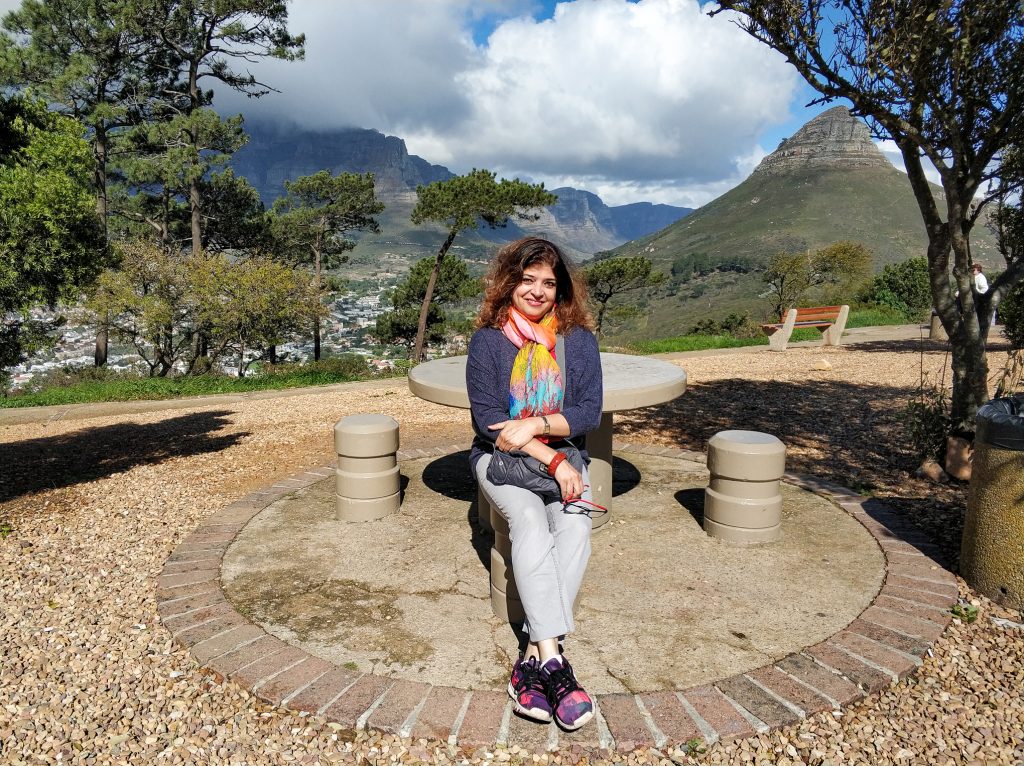
Camps Bay & The Twelve Apostles – Cape Town’s Scenic Coastal Retreat
Continuing from Table Mountain and the Cape Peninsula, a majestic series of rugged hilltops lines the eastern edge of the mountain — known as the Twelve Apostles. These towering peaks create a dramatic backdrop to Camps Bay, one of Cape Town’s most iconic and luxurious beachside neighborhoods.

From Camps Bay, the view of the Twelve Apostles is nothing short of spectacular. They rise like a natural fortress behind the shoreline, giving the impression of guardian sentinels watching over the coast. The beach itself is a stretch of soft white sand, framed by smooth granite boulders and lashed by the powerful Atlantic waves. The sea here is wild and energetic, with foamy surf rolling in to meet the shore in rhythmic bursts.
Along the bustling beachfront promenade, upscale cafés, pubs, and restaurants cater to both tourists and locals. Some sip local wines or craft ales, others tuck into burgers, seafood, and gourmet coffees, all while taking in the shimmering ocean and mountain views. Camps Bay is not just a beach — it’s a place to soak in Cape Town’s coastal elegance.
We wrapped up our time at Camps Bay with a sumptuous lunch at the TGIF restaurant, perfectly located along the beachfront. As we dined, we watched the changing weather — a playful dance of sunshine and intermittent drizzle that only added to the beach’s charm. The refreshing breeze, the sound of crashing waves, and the distant view of the Twelve Apostles made it an afternoon to remember.
After relaxing for a couple of hours, we made our way back into the city, a short 15 km drive, with plans to explore one more highlight of Cape Town — the Two Oceans Aquarium, a favorite among families and marine life enthusiasts.
Robben Island
Robben Island, accessible only by ferry, holds a deep historical significance as the place where Nelson Mandela was imprisoned for the majority of his 27-year sentence. Today, it stands as a UNESCO World Heritage Site and a powerful symbol of South Africa’s journey from apartheid to democracy.
A visit to Robben Island is one of Cape Town’s top tourist experiences, offering a guided tour of the former prison, led by ex-political prisoners. The ferry tour lasts about four hours, including the boat trip to and from the island, and typically runs three times a day. Official tour information and bookings can be made at the Robben Island Museum website.
We had booked our tour in advance, but unfortunately, unpredictable weather led to its cancellation on the scheduled day — a common occurrence due to the often rough seas around the island.
Two Ocean’s Aquarium : V & A Waterfront
Just a short walk from the V&A Waterfront, the Two Oceans Aquarium is one of Cape Town’s most loved attractions — and for good reason. Representing the marine life of both the Atlantic and Indian Oceans, this world-class facility offers an immersive experience for visitors of all ages.
From the instantly recognizable clownfish to poisonous sea snakes, vibrant jellyfish, majestic rays, and awe-inspiring sharks, the aquarium is home to over 3,000 species of marine and ocean life. Each exhibit is beautifully designed to simulate the natural habitat of these creatures, offering both visual delight and a deeper understanding of marine ecology.
Interactive zones, touch pools, and educational displays make it a hit with kids, while the scale and biodiversity impress even seasoned travelers. Expect to spend a cool and engaging two hours exploring this underwater world.
Right behind the aquarium is a quieter stretch of the harbor, where Cape fur seals can often be seen lounging on the docks — a charming end to your visit.
You can plan your visit and book tickets online at the Two Oceans Aquarium Official Site.

V&A Waterfront – The Heart of Cape Town’s Tourism
The V&A Waterfront is undoubtedly one of the most vibrant and popular tourist destinations in Cape Town, conveniently situated in the city’s central harbor area. This bustling waterfront precinct beautifully blends natural beauty, history, and modern entertainment in one scenic location.
The Victoria and Alfred ( V & A) waterfront sports the Cape Town wheel, and next to it is a flamboyant shopping mall selling everything from groceries to diamonds.
Hang out at the ‘fish and chips’ shacks near the jetty, or the more trendy and upmarket restaurants lined alongside the markety.
You will see musicians and street actors displaying their acts and talents here, and adds a warmer feel to the place. A must go for your Cape Town diaries.
The waterfront boasts a charming jetty lined with elegant sailboats, colorful trawlers, rowing boats, and motorboats gently bobbing on the water. The setting is idyllic, framed by the backdrop of Table Mountain and the Atlantic Ocean, creating a picture-perfect ambiance.
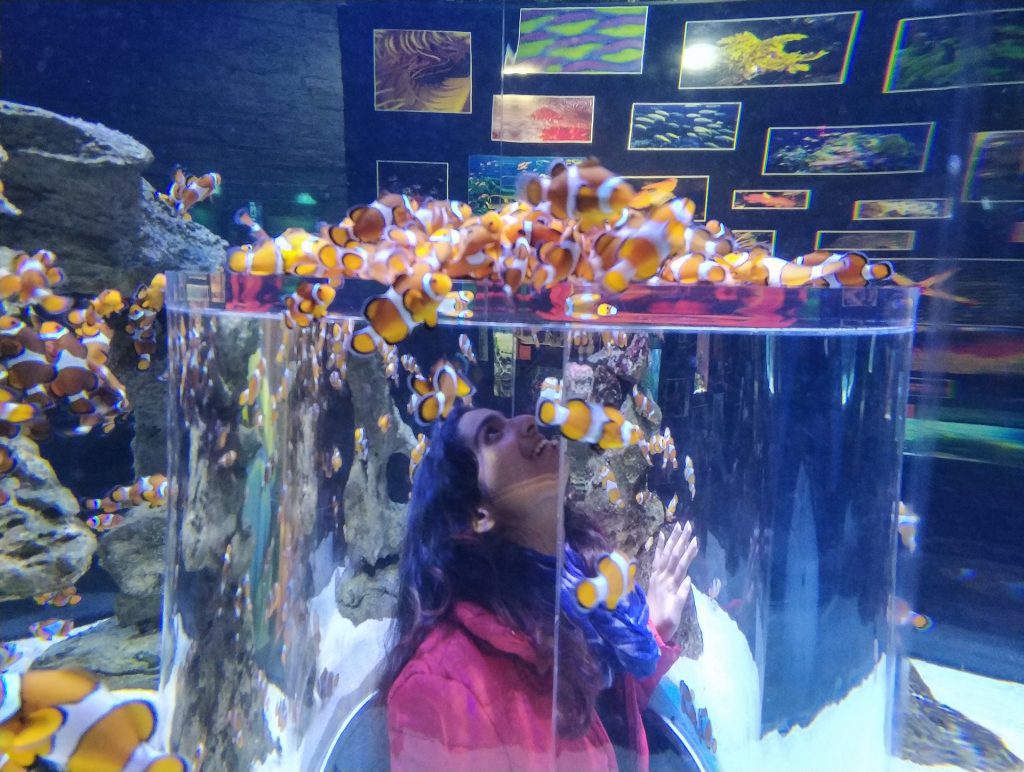
The Two Oceans Aquarium, located at Cape Town’s vibrant V&A Waterfront, is a premier marine attraction showcasing the incredible biodiversity of the Indian and Atlantic Oceans that converge at South Africa’s southern tip. Home to over 3,000 marine species, the aquarium offers visitors a fascinating glimpse into the underwater world.
The highlight is the vast I&J Ocean Exhibit, featuring a huge tank with a 10-meter viewing window and an underwater tunnel where visitors can see sea turtles, rays, and schools of colorful fish swimming all around. The Predator Exhibit features impressive sharks and other ocean hunters, offering a thrilling experience for marine enthusiasts.
Another unique display is the living kelp forest, replicating the natural habitat found along the South African coastline. Visitors can also enjoy the lively penguin exhibit, featuring African and rockhopper penguins, where the playful birds delight audiences.
Beyond its exhibits, the aquarium is deeply committed to marine conservation and education, running programs that raise awareness about ocean health and protecting endangered species. Its location at the V&A Waterfront makes it easily accessible for families and tourists alike.
We spent two nights and most of the third day in Cape Town, a city that effortlessly blends natural splendor with urban charm. Its winding roads, dramatic coastlines, and ever-changing landscapes kept us captivated at every turn. Despite the rainy, overcast skies that lingered throughout our stay, the beauty of the city never dimmed. From the iconic Table Mountain, which we reached via a scenic rotating cable car ride, to the wild, white-sand beaches of Camps Bay where powerful tidal waves crashed ashore, Cape Town revealed its many moods. One of our favorite drives was along Signal Hill, offering sweeping views of the city, the Twelve Apostles. Sadly we missed the distant Robben Island resting in the Atlantic.
With interactive displays and stunning marine life, the Two Oceans Aquarium is a must-visit for anyone exploring Cape Town, providing both entertainment and valuable insight into marine ecology.
Visitors can explore a lively food market offering fresh local produce and gourmet treats, browse through unique boutique stores, and visit an inspiring art gallery showcasing South African creativity. Nearby, a striking deck features statues of four South African Nobel Laureates, paying homage to the country’s rich history and achievements.
Wandering through the bustling lanes, you’ll find an inviting atmosphere where street performers entertain and vendors offer handcrafted souvenirs. Grab a refreshing can of soda or a chilled iced coffee from one of the many cafés, and enjoy a leisurely stroll soaking in the sights, sounds, and spirit of this iconic Cape Town hotspot.
Discover Bo-Kaap – Cape Town’s Colorful Cultural Gem
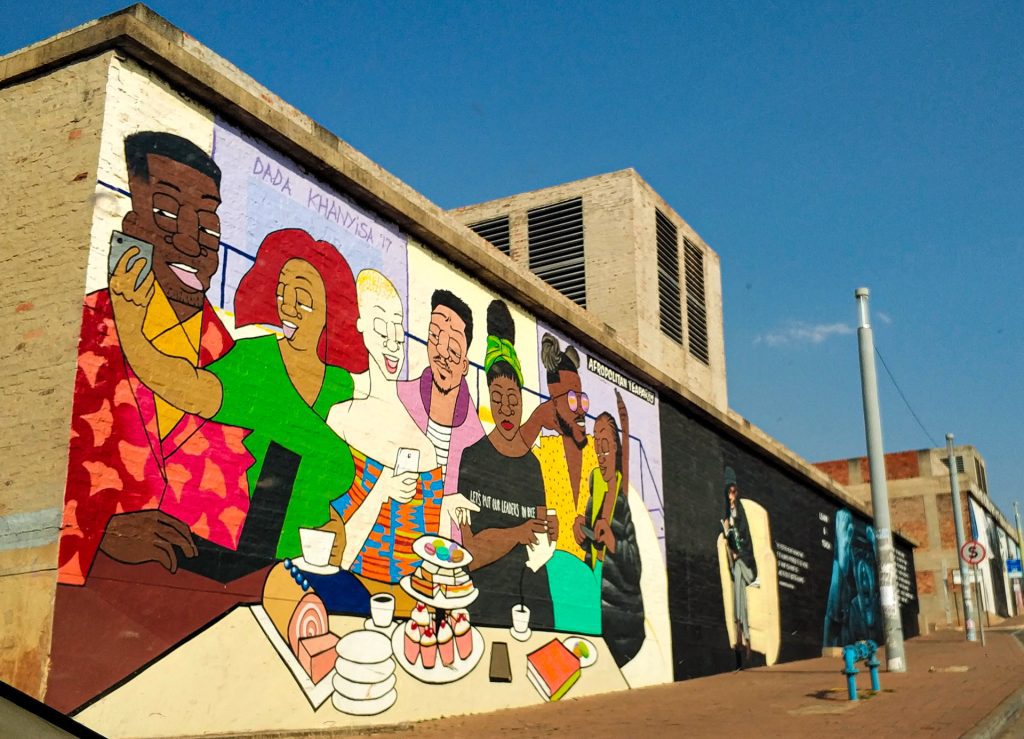
Just a short distance from the bustling V&A Waterfront—about 2 kilometers away—and nestled close to Signal Hill, lies the vibrant and historic neighborhood of Bo-Kaap. Once known as the Malay Quarter, Bo-Kaap today remains a predominantly Islamic community, rich in culture, tradition, and history.
What makes Bo-Kaap instantly recognizable are its brightly painted houses, lined up along cobblestone streets, creating a kaleidoscope of color that captivates visitors from around the world. These vivid hues are more than just eye-catching—they represent a strong sense of identity and resilience among the community.
Bo-Kaap’s history dates back to the 17th and 18th centuries, when enslaved people were brought from Malaysia, Indonesia, and other parts of Southeast Asia by Dutch colonialists to work on plantations. Over time, these communities established Bo-Kaap as their home, and it remains a powerful symbol of Cape Town’s multicultural heritage.
Walking through Bo-Kaap offers a glimpse into the past, with historic mosques, cultural museums, and traditional Cape Malay cuisine that invites visitors to experience the soul of this unique neighborhood.
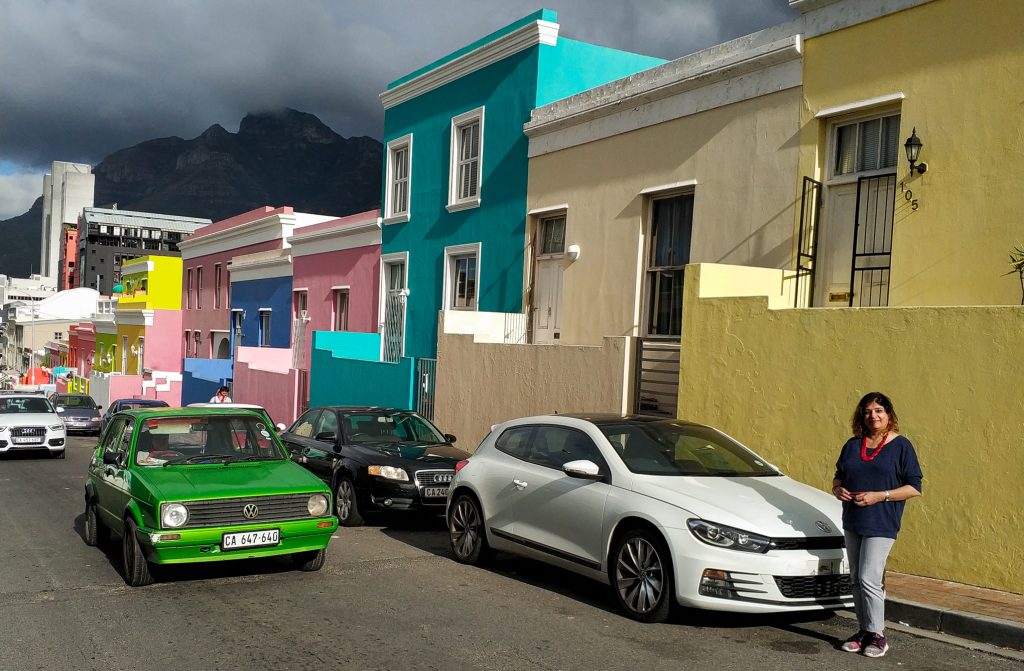
Cape Town is a place that truly deserves a spot on every traveler’s bucket list. Its mix of adventure, history, and natural beauty is unforgettable. Though we had hoped to explore more—like the vibrant Long Street or the postcard-perfect Blouberg Beach—time wasn’t on our side. Still, the city left a lasting impression, and we know we’ll be back someday to pick up where we left off.
t was well past noon when we had soaked in enough of Table Mountain’s majesty and decided to take the cable car back down to the city. A quick, light lunch followed—just enough to fuel us for the long drive ahead.
Our 2 day tour of the incredible Panorama Route-3
The Panorama Route offers majestic views and myriad combinations of different forms of nature, with…
Game viewing @ Kruger National Park for the elusive Big Five-2
Kruger National Park is the largest game viewing park in South Africa and the most…
First glimpse of the Tribals of South Africa -1
To start our South Africa Tour we had our first glimpse of the Tribals of…
Our next stop was Hermanus, a charming coastal town situated on the southern edge of the Western Cape, along the shores of the Indian Ocean. Located about 120 kilometers from Cape Town, the journey took us through scenic countryside roads, vineyards, and mountain passes—each turn offering glimpses of South Africa’s raw and untamed beauty.
We had planned just one night in Hermanus, known globally for its whale watching and rugged coastline. It was to be a short but memorable detour before we looped back northwards.
From Hermanus, our final destination would be Simon’s Town, nestled along False Bay. A naval town rich in history, and home to the famous penguin colony at Boulders Beach, it promised to be the perfect place to wind down our South African journey.
Back to our question of “Which is the capital of South Africa” ? The answer is South Africa has three capitals : Pretoria is the administrative capital, Cape town the Legislative and Bloemfontein is the judiciary capital of South Africa which houses the Supreme Court.




